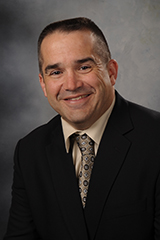March 26, 2019
The Three Cord Braid

People ask what I have been reading and when I find the time to read. The genres I seem drawn to are leadership, psychology, education, management, fitness, military history, historical fiction, and mysteries. I don’t get to read as much as I like, but I do read when I am exercising. I read the thirty minutes I am on my exercise bike and the two minutes between each weightlifting set I do. Reading two minutes at a time is a slow process, but it works.
I am currently reading Gavazzi and Gee’s Land-Grant Universities for the Future: Higher Education for the Public Good. Over the next few weeks I will be weaving concepts from this and other recent readings into my Tuesday Letter articles.
The overarching theme the authors seem to impart is that Land-Grant universities need to reconnect with the public and communities they serve and refocus on our tripartite mission of teaching, research and extension & engagement. These characteristics of the Land-Grant universities enabled us and set us apart from all other public and private universities from the beginning – starting with the Morrill Act of 1862 and then reinforced by the later Morrill Acts, the Hatch Act of 1887 and the Smith Lever Act of 1914 – and they should set us apart today.
An analogy often used to describe our tripartite mission is the three-legged stool. The three legs (teaching, research, and extension & engagement) are there, each individually supporting the university and the people it serves. I have never been comfortable with that analogy. This book is helping me to see why. The three legs are there, often working independently from each other, just doing their own thing. They may not even pay attention to each other, or, worse, they may criticize or even try to hinder the others. No one notices until one or two legs become too weak or too strong. Then the stool wobbles or even collapses. Everyone notices then.
In my opinion, a better analogy for our tripartite mission is a three cord braid. Each cord – representing teaching, research, and extension & engagement – is intertwined and works with each other to make a stronger rope, representing the university. The teaching mission and activities complement and reinforce the research and extension & engagement missions and activities. The research mission and activities complement and reinforce the teaching and extension & engagement missions and activities. The extension & engagement mission and activities complement and reinforce the teaching and research missions and activities. Working together, they represent a much stronger university. One that is better able to serve the public.
This analogy can be extended to our extension system, too. The Cooperative Extension System is a tripartite system with local, state, and federal cooperators each wanting the same overall goals: a better educated and better engaged populace. If we approach things in the three-legged stool manner, or, even worse, in an “us versus them” manner – are we effectively pursuing those overarching goals? No. If, however, we approach the overarching goals in a three cord braid manner, where we respect, complement, and reinforce each other – won’t we be more effective at achieving that goal? Yes.
When you have your free thinking time – whether it be during windshield time, office quiet time, or even between weightlifting sets – I encourage you to think about how we in extension can operate more like a three cord (local, state, and federal) braid as we develop a better educated and engaged populace. Avoid the temptation to only come up with what the other “cords” can do for your particular “cord.” Think of one thing that your particular “cord” could improve upon for every item that you come up with for the other cords to improve upon. Please send your list of ideas to ghadley@ksu.edu.